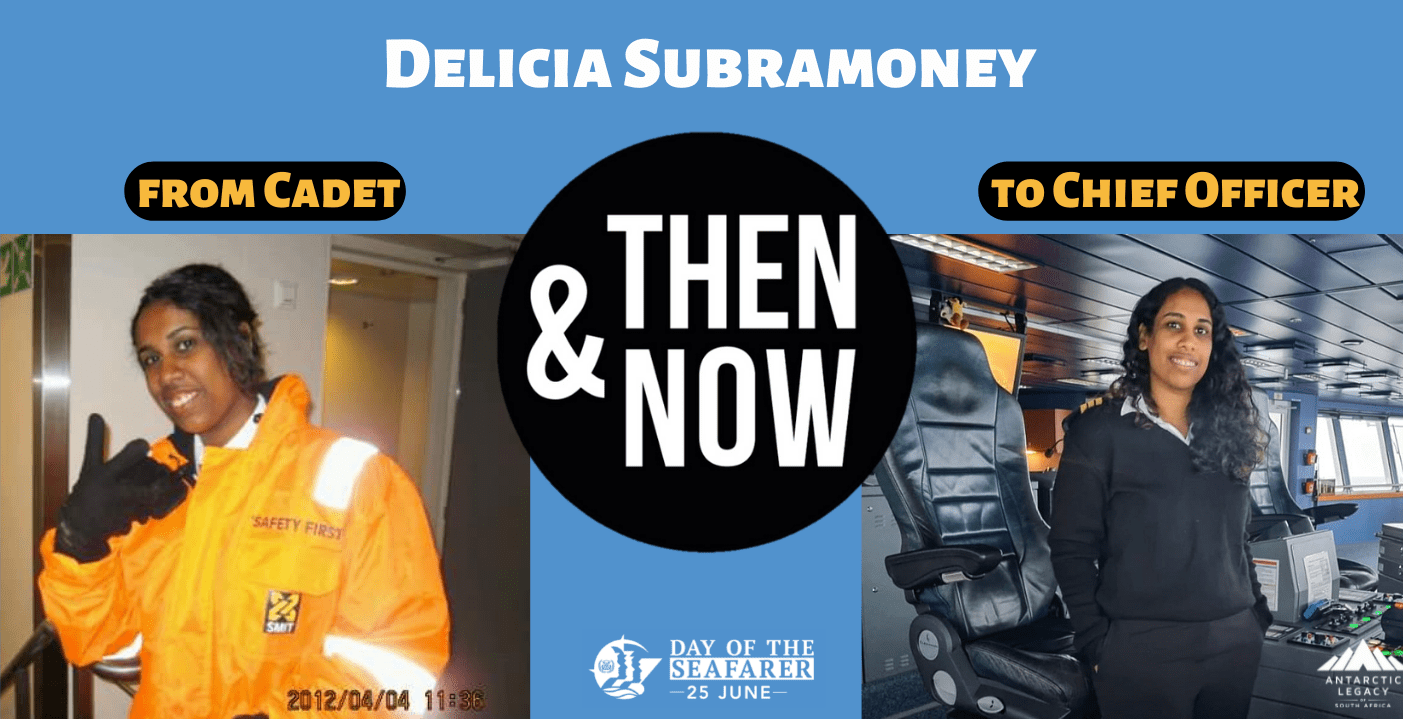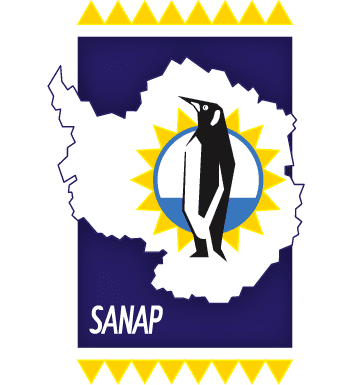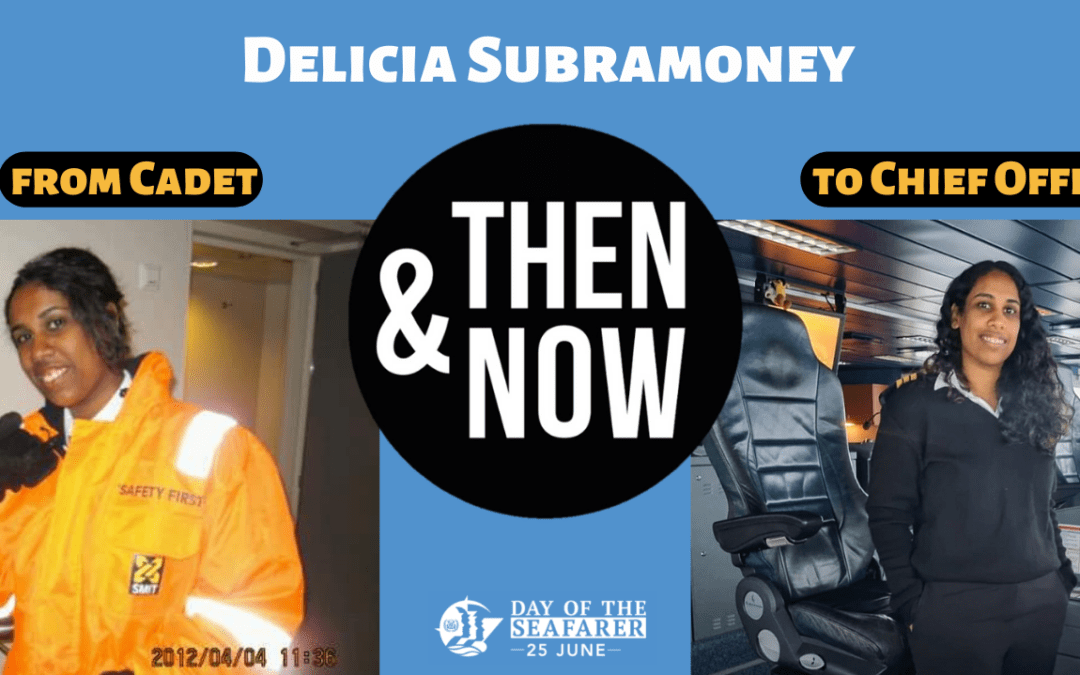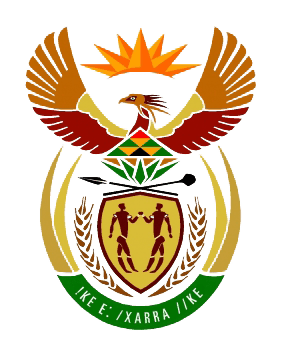Day of the Seafarer, launched in 2011, is a day to pay tribute to all those working in the maritime industry. This year’s theme is ‘Your voyage – then and now, share your journey’.
Seafarers play a crucial role in the South African National Antarctic Programme.
I had the opportunity to come in contact with the newly promoted Chief Officer Subramoney, working for African Marine Solutions (AMSOL). AMSOL manages the South African polar research and supply vessel, the S.A. Agulhas II, and the Algoa research vessel.

This is the journey of Chief Officer Delicia Subramoney
THEN and NOW – from cadet to Chief Officer
My journey started as a trainee (cadet) onboard the SA Agulhas II. I joined the vessel on its maiden voyage from Finland (click here, for images). I’ve fulfilled all navigational ranks onboard such as 3rd officer and 2nd officer, whilst working with AMSOL. And 10 years later, promoted to Chief Officer. It’s been a very challenging yet rewarding journey stepping onboard as Chief Officer and being a part of senior management after all these years.
Was becoming a seafarer always your dream?
Yes, I was introduced to the career and encouraged to apply for maritime studies at a very young age, due to my love for the sea and strong-willed characteristics. I began my maritime and seafarer career at the Durban University of Technology in 2011 and I’ve been at sea for 10 years.
Any special places you’ve visited while working onboard the S.A. Agulhas II?
South Georgia will always be my ultimate experience. I’ve never experienced a place more serene and beautiful.
Describe a typical day as Chief Officer onboard the S.A. Agulhas II?
The chief officer on board is responsible for safety and security, and managing the deck department and its operations. A typical day involves a lot of running around, safety discussions, organizing operations, and a ridiculous amount of coffee.
Being a seafarer can get really tough at times, what are the challenges of being a seafarer?
There’s honestly too much to mention. The maritime industry is faced with so many challenges, and at the same time quite neglected. It was especially difficult during the Covid-19 pandemic with an extended tour of duties, restrictions on shore leave, not being able to see your family, commercial pressure, and an overall stressful environment. I think the overall challenge for me is managing stress in such a demanding environment. Having a land-based job makes it a bit easier because you have access to family, friends, and other facilities that help you destress. However, being on a ship for long periods of time becomes an overwhelming cycle.
Some last words:
My journey at sea has shaped me into the person I am today. Being a seafarer exposes you to extreme conditions. It is very challenging but at the same time contributes to your personal growth. Being a woman at sea, I feel it is my responsibility to make the environment better for the next generation. I hope that all seafarers, especially women, that come into this career can leave their mark and contribute to a more equal and diverse system. Nothing on a ship is more important than a healthy working space and teamwork. It’s not just one person’s responsibility to run the ship, it’s the officers, crew, catering staff, engineers, cadets, etc – and I am thankful for all that I have worked with and continue to learn from!
To Chief Officer Delicia Subramoney and the rest of the crew onboard the S.A. Agulhas II
Thank you for pursuing this vital career in the marine industry. Thank you for ensuring the safety and comfort of all passengers boarding the vessel.
Check out the video below by the International Maritime Organization (IMO).
Anche Louw, Antarctic Legacy of South Africa, 25 June 2022.
Images: supplied by Delicia Subramoney






